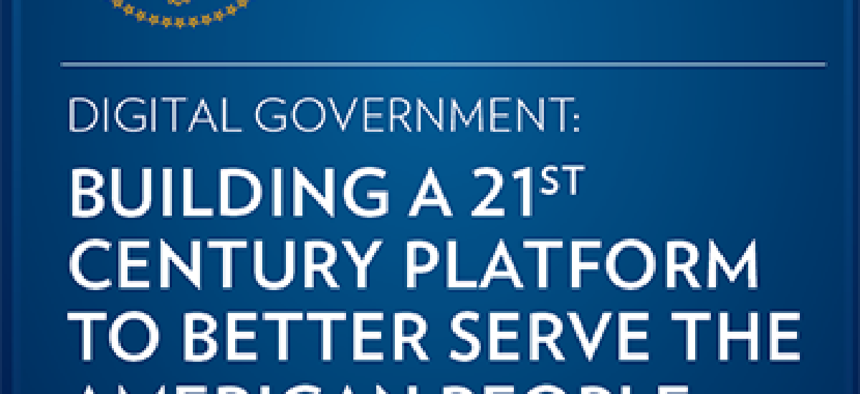Digital government milestone passes in silence

The six-month mark for the president's digital strategy has come and gone, but agency officials are waiting until the new year to call attention to it.

The six-month mark for the president's Digital Government strategy has passed.
The six-month milestone since the White House released its Digital Government Strategy has come and gone with little fanfare.
When the three-month mark came in August, U.S. CIO Steven VanRoekel penned a blog post highlighting the strategy’s early successes. The latest milestone, Nov. 23, passed with no mention at all.
Office of Management and Budget spokesperson Ari Astles told FCW in an e-mail that OMB will “highlight the ongoing work related to the Digital Government Strategy, including agency implementation successes and resources,” in early 2013.
The Digital Government Strategy update will coincide with OMB’s open data policy release, Astles said, which will build on the work of the Presidential Innovation Fellows on open data initiatives.
When OMB does highlight the milestone, the news will be reasonably good. A majority of agencies met most, but not all, of the six-month goals the strategy set. The data is available at the General Services Administration’s Digital Services Innovation Center.
But the agencies, like OMB, are not talking about it much. Calls and requests for comment to the General Services Administration and several other departments regarding the six-month deliverables were declined, with the agencies citing a desire to follow OMB’s lead.
According to David Powner, director of IT management issues at the Government Accountability Office, dueling priorities may be part of the reason for continued silence. Powner said agencies have several big initiatives up in the air right now, including TechStat, PorfolioStat and the Federal Data Center Consolidation Initiative. Powner said those projects could realize about $10 billion in savings all together.
“Prioritizing work ends up being a big thing,” he said, adding that dollar savings can certainly make a difference with regards to agency prioritization.
Jay Huie, a senior project manager at ActioNet, Inc. and creator of the digital government strategy tracker, said progress is not always perfectly on deadline.
“Deadlines are good, motivating factors, but there also needs to be recognition that you can’t mandate innovation on a timeline,” said Huie, whose government tracking tool monitors websites that are supposed to result from the Digital Government Strategy.
“If an agency didn’t turn a website on, maybe that’s not bad as long as it is in the process of turning it on,” said Huie. “Tools like the Digital Government Tracker, I think should be used as tools not to bludgeon agencies over the head but to ask the question, ‘Do you need help?’ And if so, let’s get the federal CIO in there and find out why.”
Milestones
Some of the six-month milestones from the Digital Government Strategy
- OMB: Issue government-wide open data, content, and web API policy and identify standards and best practices for improved interoperability. (In progress)
- GSA: Establish government-wide contract vehicle for mobile devices and wireless service. (Pending)
- GSA: Establish agency-wide governance structure for developing and delivering digital services. (Completed)
- GSA: Establish government-wide contract vehicle for mobile devices and wireless service. (Pending)
- GSA: Update the dot gov guidance and procedures to help ensure all new digital services meet improvement guidelines and provide support to agencies. (Completed)
- All agencies: Develop an enterprise-wide inventory of mobile devices and wireless service contracts. (In progress)
- All agencies: Implement performance and customer satisfaction measuring tools on all .gov websites. (In progress)
NEXT STORY: Noel Dickover's TechCamps gaining speed






